On this still, silent, gloomy gunmetal grey day, apart from the avian variety we discerned very little signs of life as we took a not very hopeful drive into the forest.

A pheasant trotted across Sowley Lane;
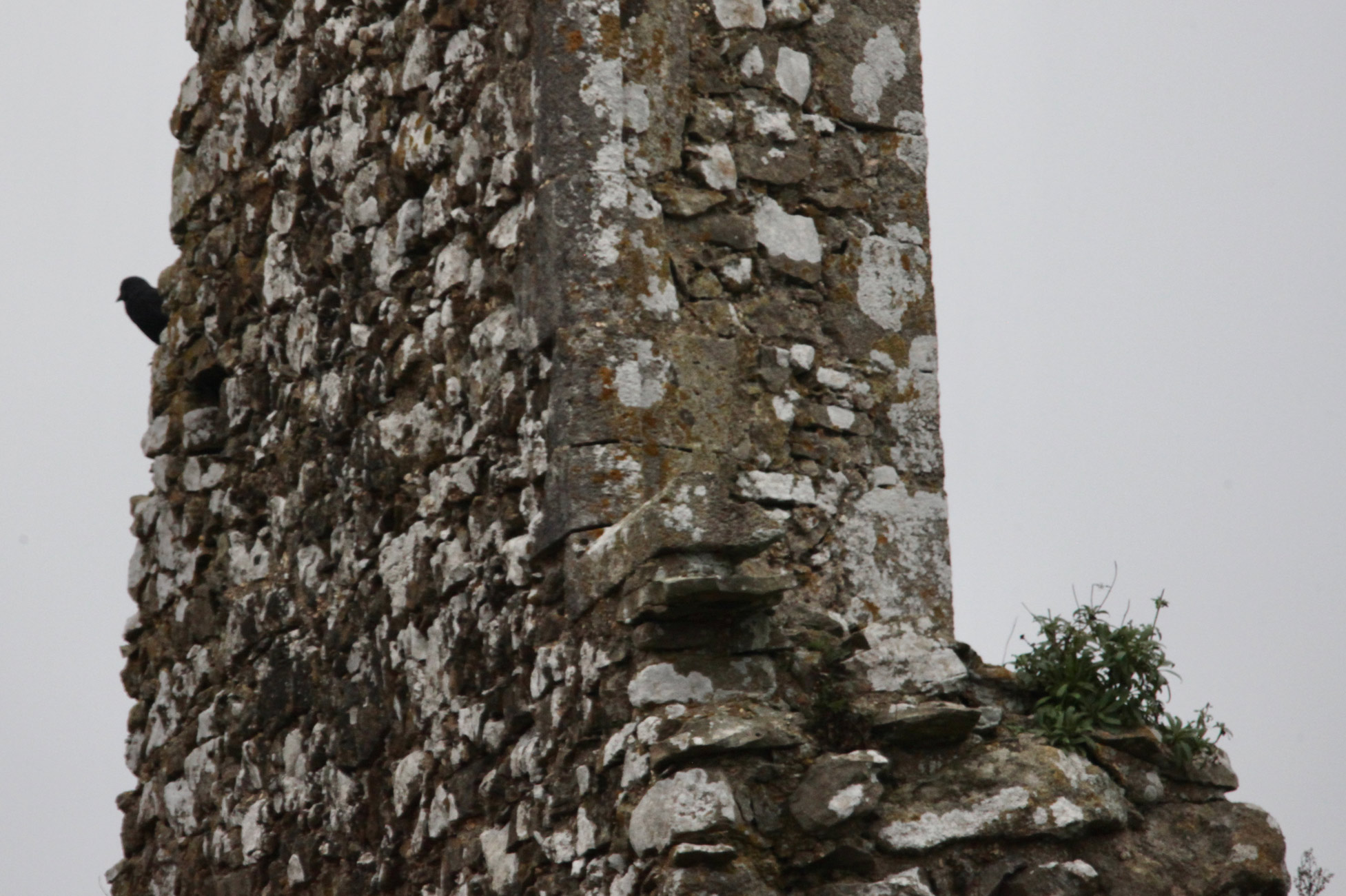

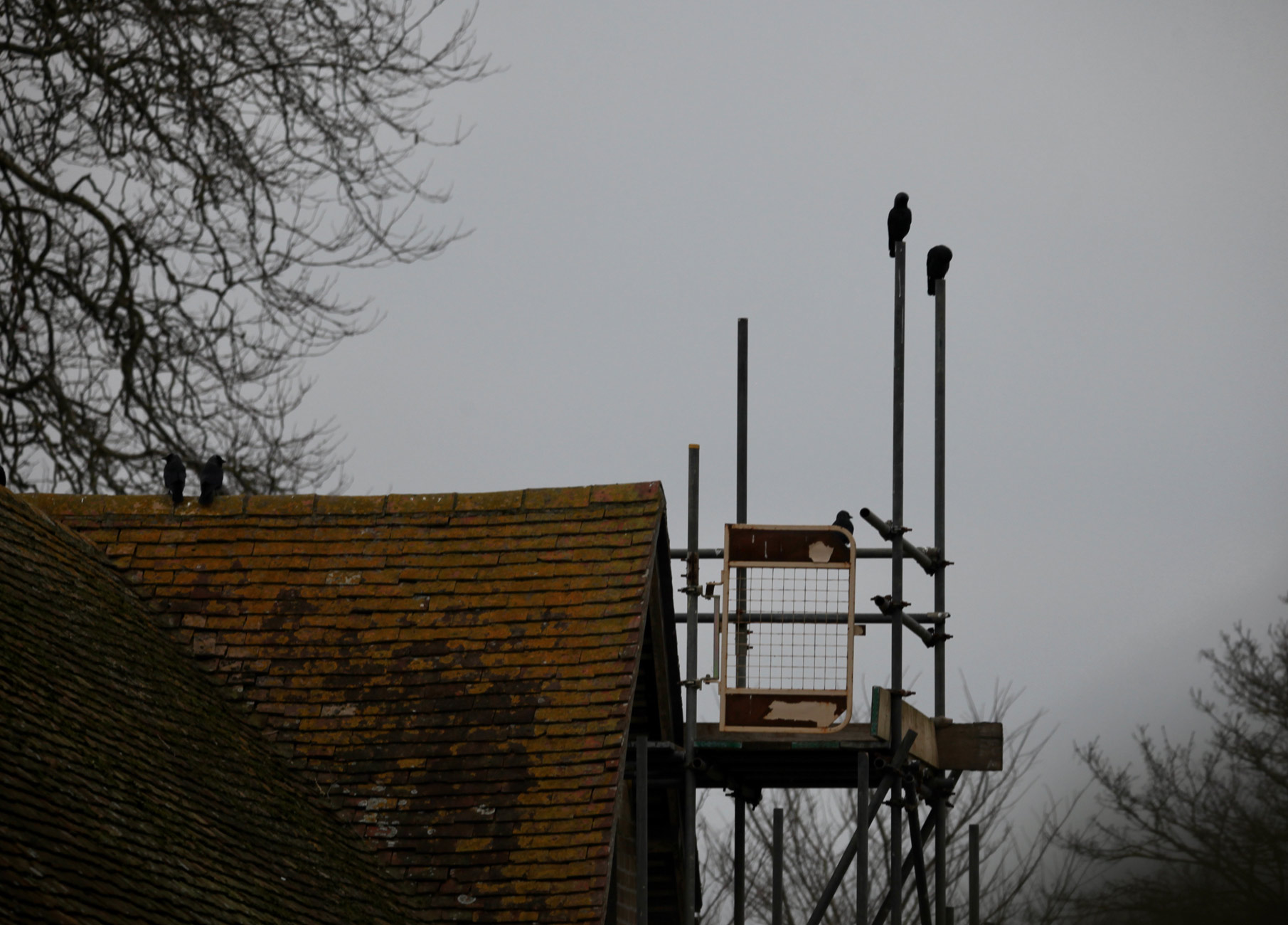

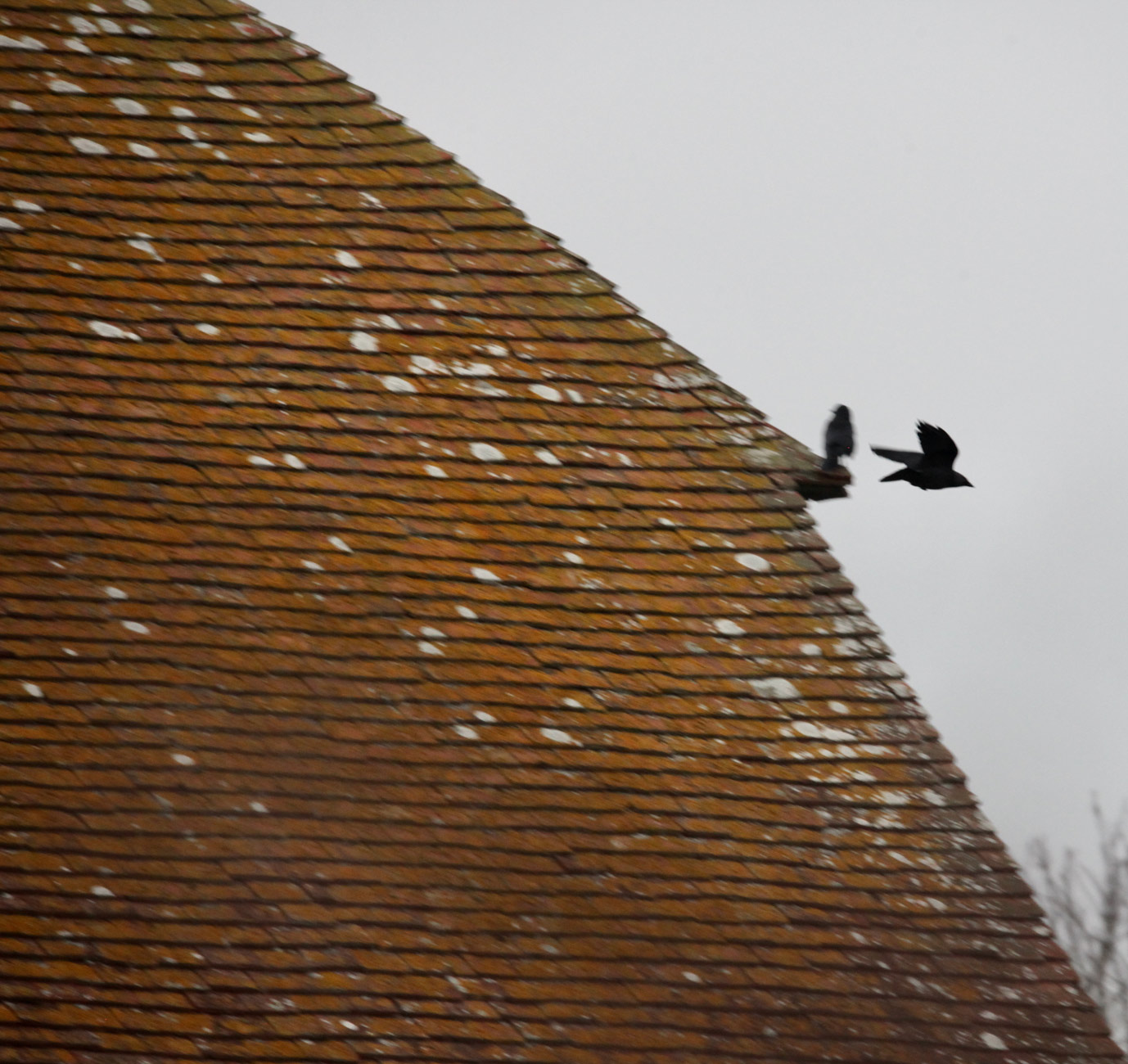
except for one fleeting moment even crows and doves were not in their usual numbers on the roofs and ruins of St Leonard’s ancient granary.

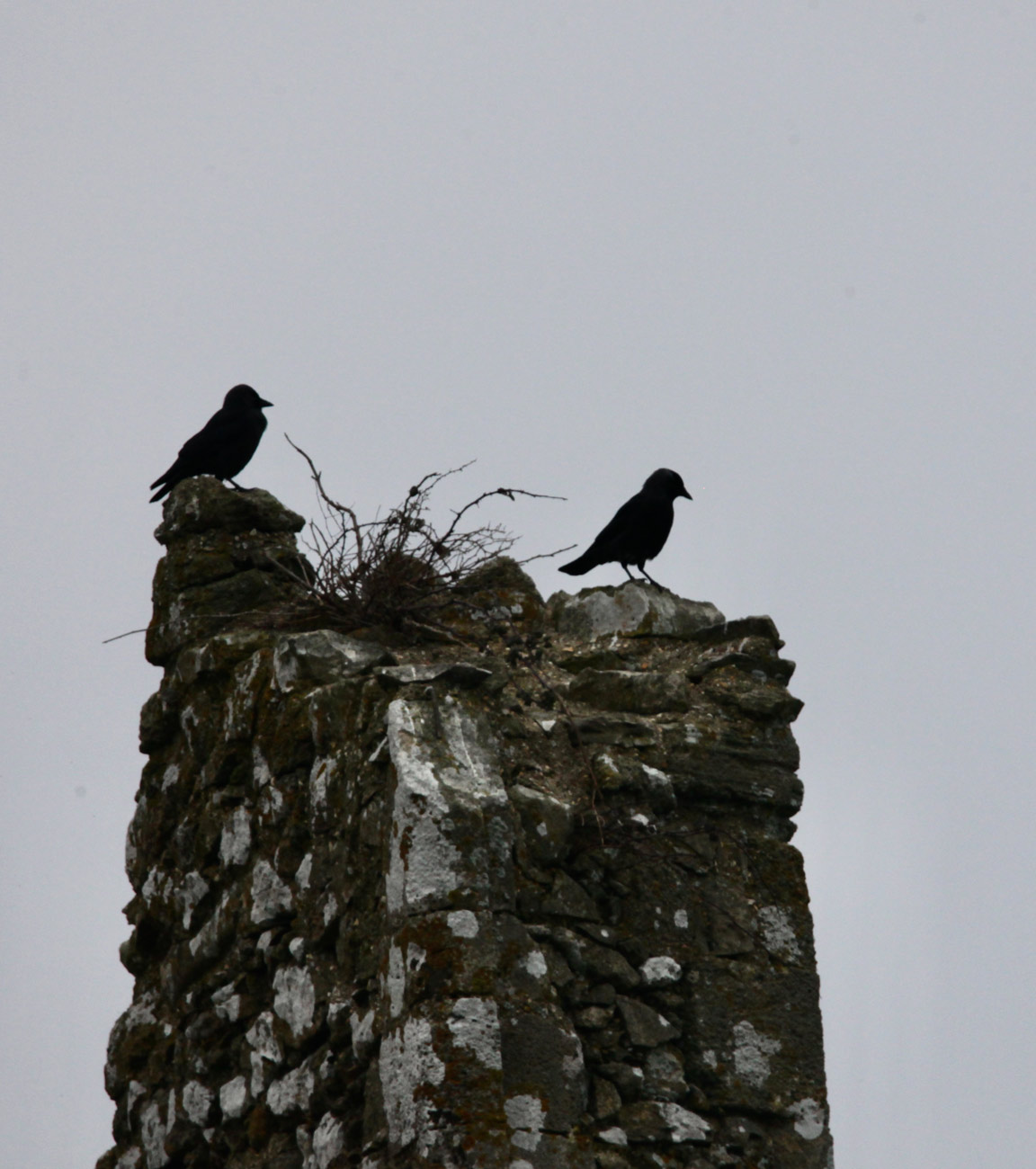
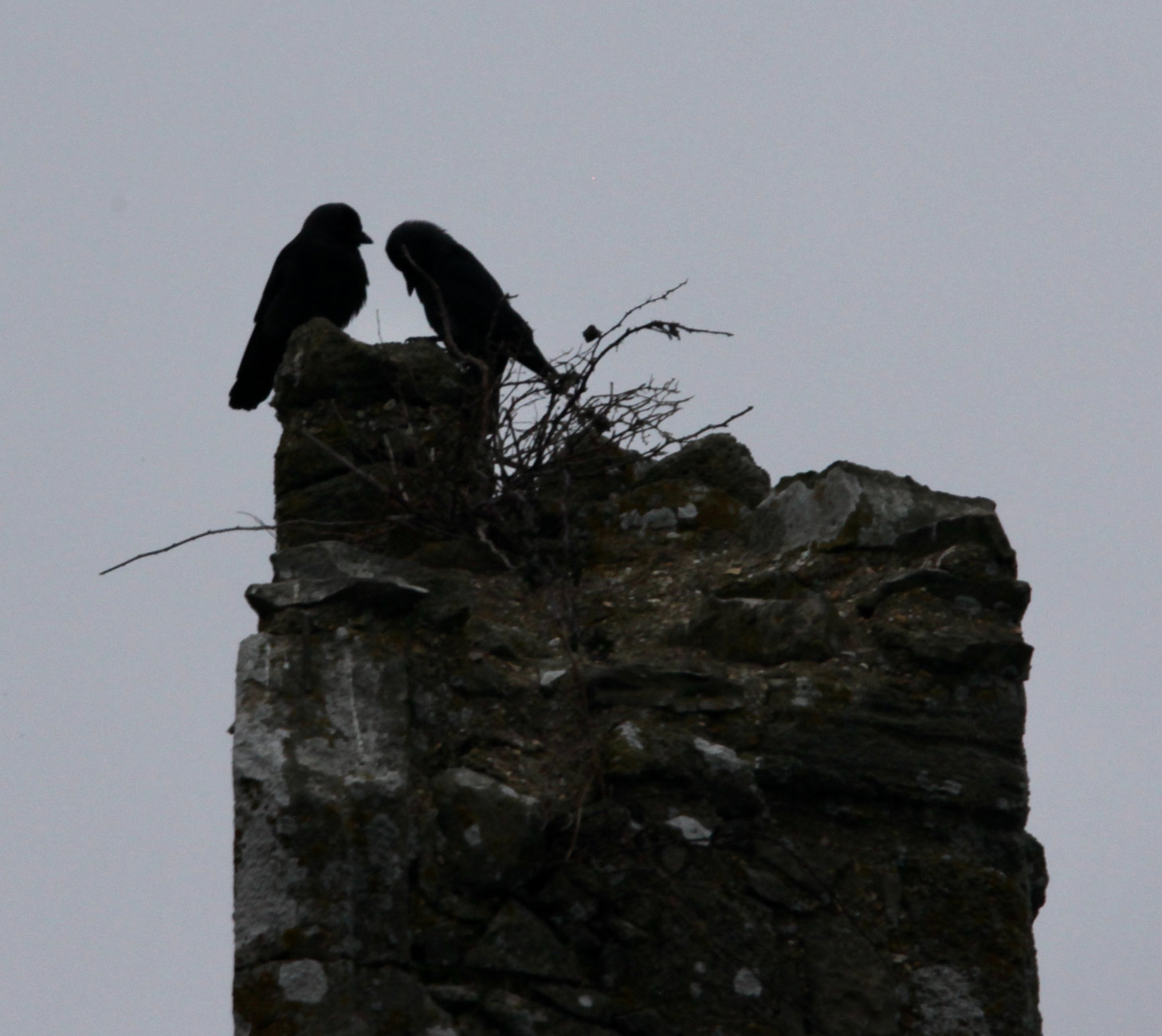
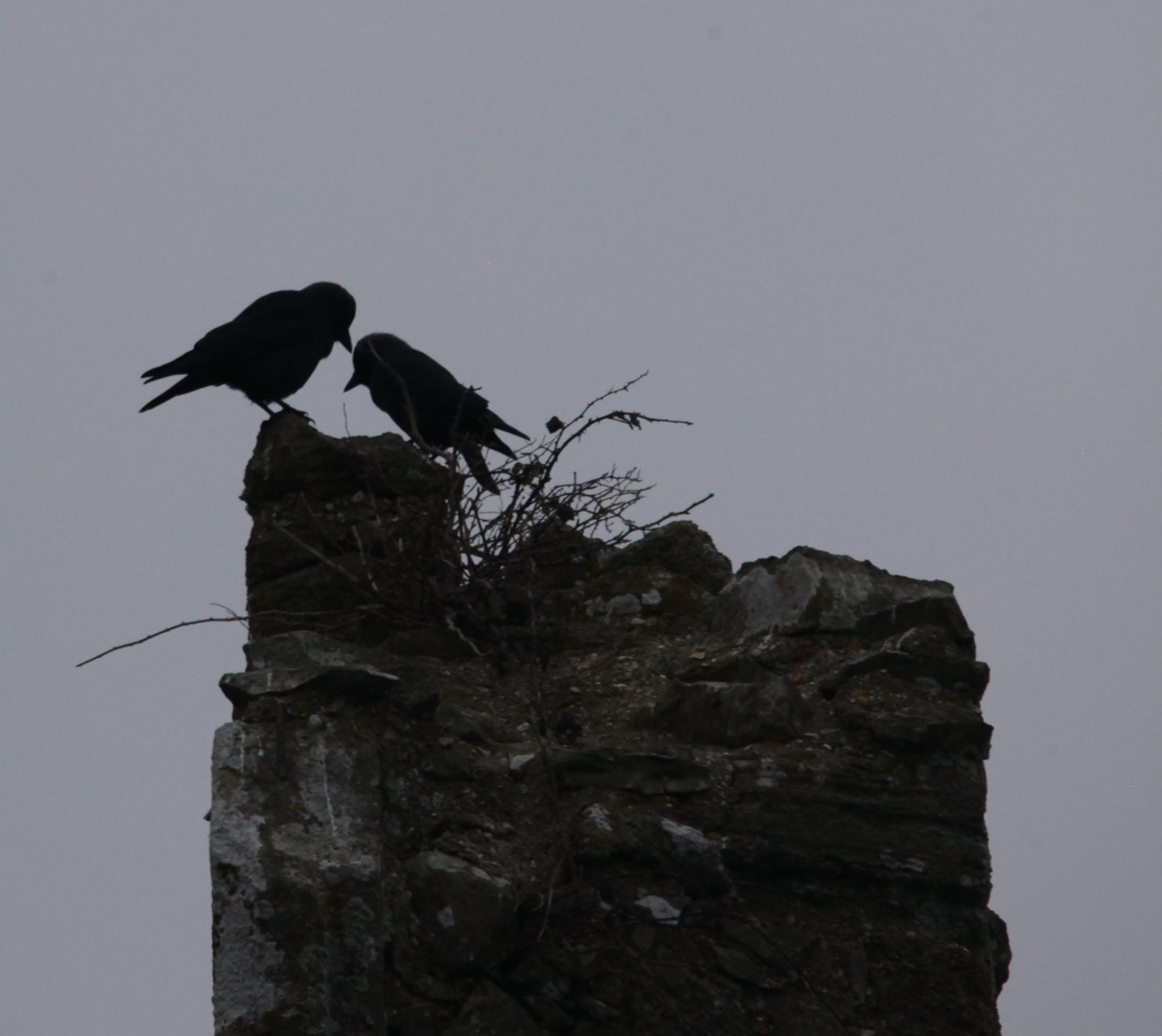

A crow courtship was taking place atop a ruined wall. Could this be a prospective nest?

Jackie also photographed a perching crow;

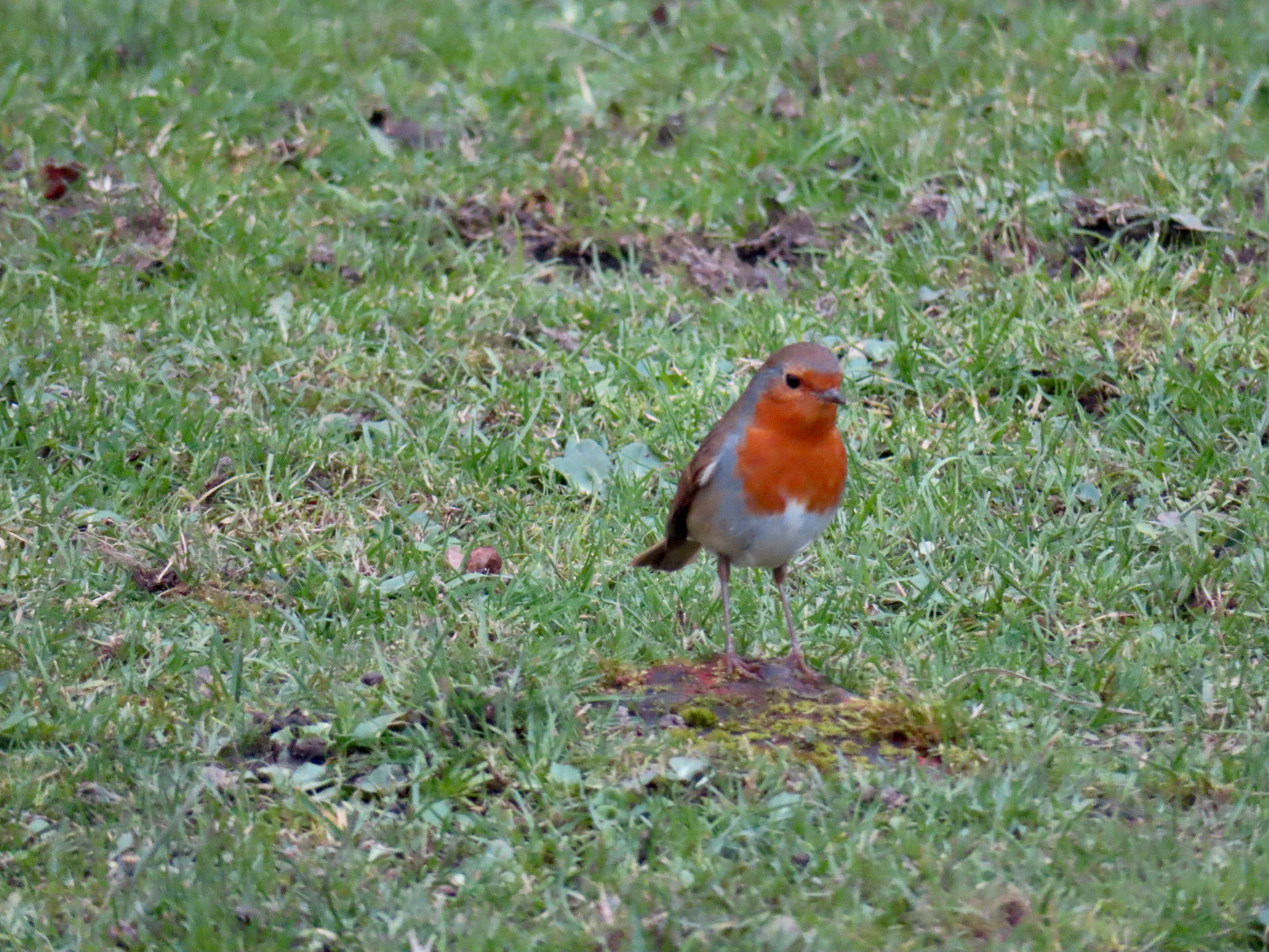
a grounded robin; and


a flightless kite.



The first ponies we sighted were cropping the East Boldre moorland;

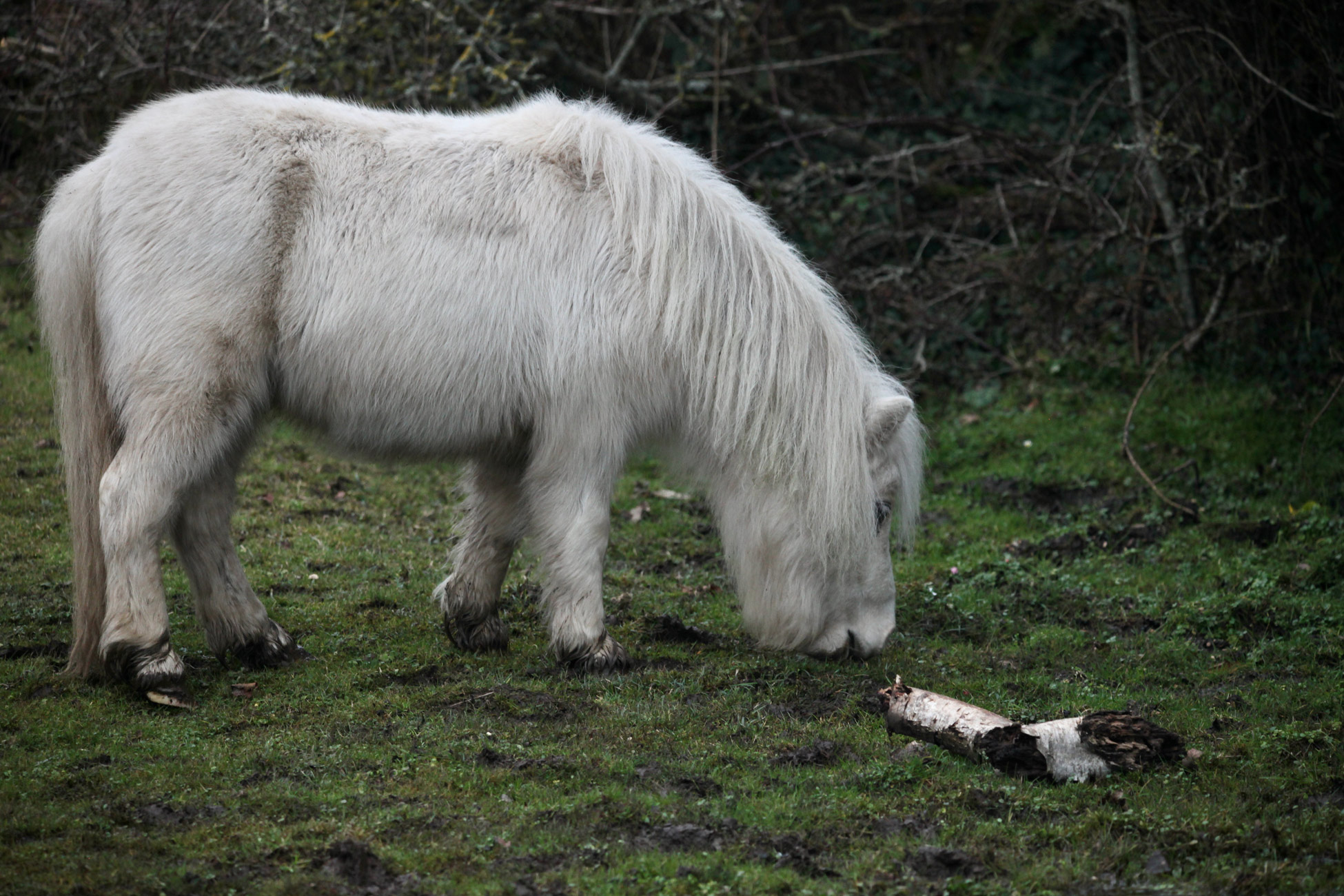
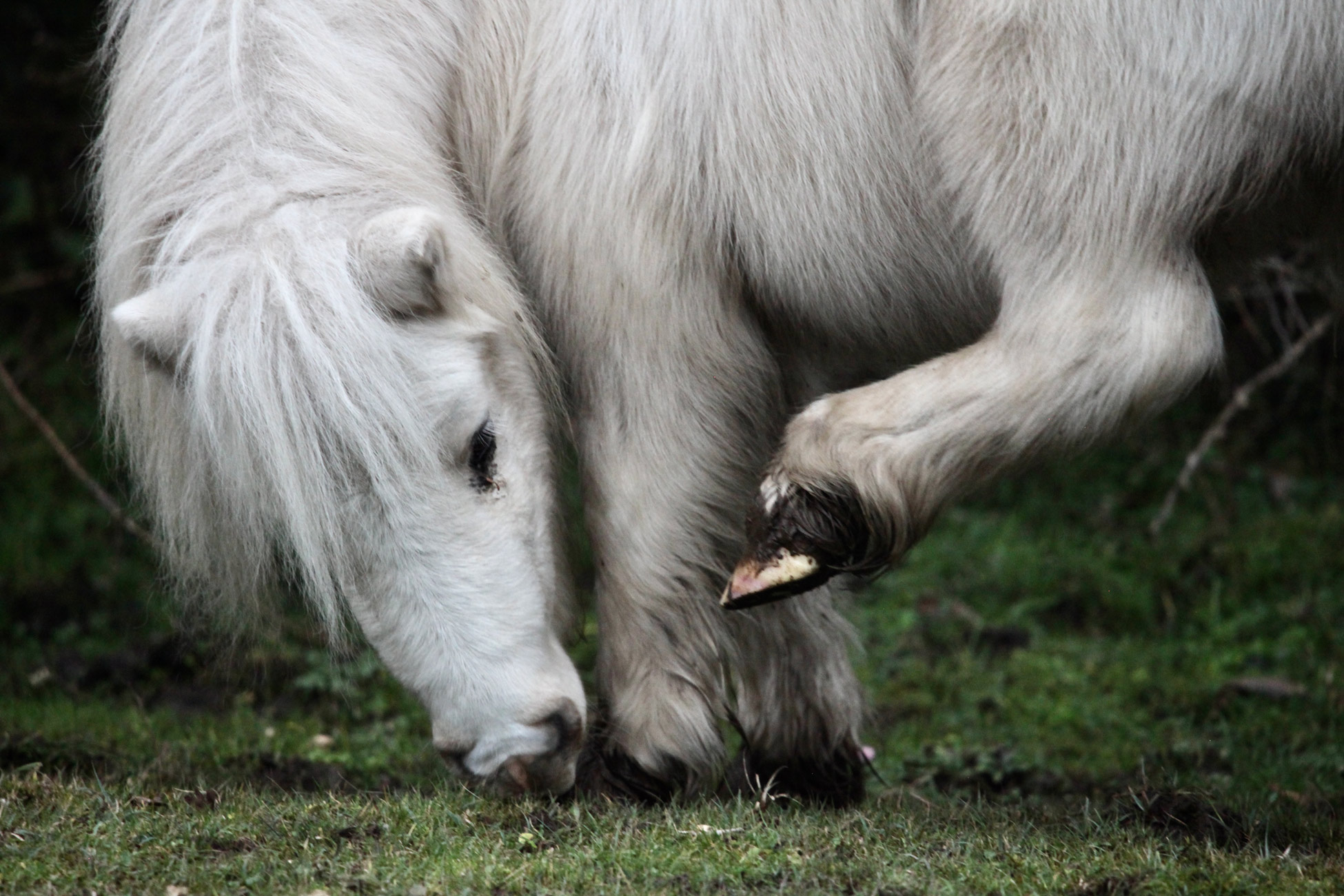
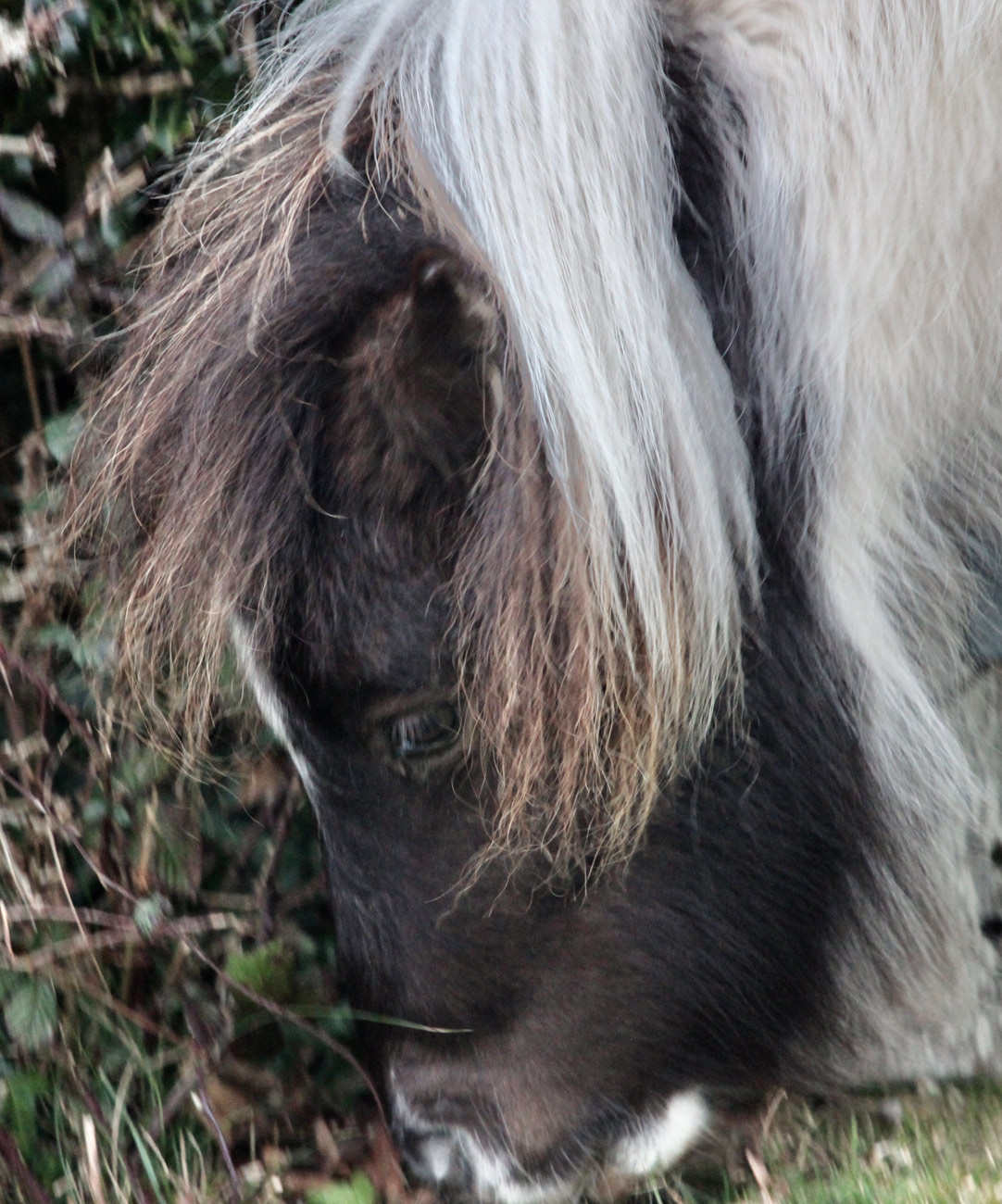
a pair of Shetlands shaved the green in front of Turnstone Cottage.
This evening we enjoyed a second sitting of Jackie’s succulent sausages in red wine; crunchy carrots and cauliflower; creamy mashed potatoes; and firm Brussels sprouts. The culinary Queen drank Stellenbosch Chenin Blanc 2021, and I drank more of the Shiraz.
PS. I have often featured this ruin, never with such a comprehensive history as Lavinia’s question has prompted:
(1) St. Leonard’s Barn
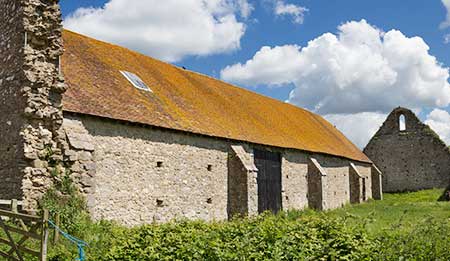 St. Leonard’s barn, looking from close to the scant remains of the western gable, past the more recent barn and on towards the eastern gable
St. Leonard’s barn, looking from close to the scant remains of the western gable, past the more recent barn and on towards the eastern gable
Particularly impressive evidence of the monks’ farming endeavours can be seen at St. Leonard’s where the ruins of an enormous 13th or 14th century barn, with a later, circa 16th century, barn built within, stand by the roadside.
Said to be the largest barn built in medieval England, the St. Leonard’s barn was 70 metres (230 feet) long and 33 metres (108 feet) wide, and had a capacity of ½ million cubic feet. Originally a seven bay aisled barn with porches either side of the centre bay, the whole of the east gable end and north wall remain, and so do most of the west gable and the east part of the south wall.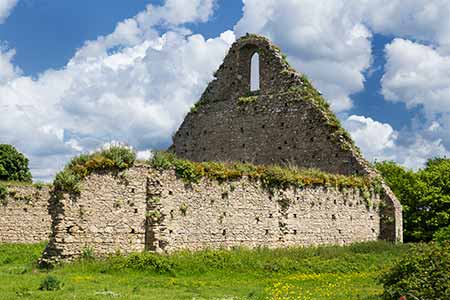 St. Leonard’s barn – the remains of the huge eastern gable
St. Leonard’s barn – the remains of the huge eastern gable
Barns such as this – the Cistercian order alone is reputed have built up to 3,000 – were used to store grain grown locally and also provided workspace for threshing the grain in a lengthy, labour intensive process whereby the crop was spread on the floor and beaten with heavy wooden flails so as to separate the grain from the straw and chaff – the dry, scaly protective casings around the seeds.
The barn, then, would clearly have been an absolute hive of activity in stark contrast to its current, peaceful persona.
(2) St. Leonard’s ‘sister’ barn at Great Coxwell
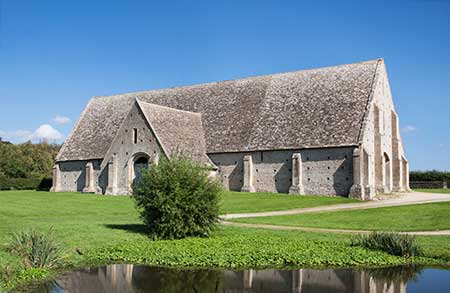 Great Coxwell barn
Great Coxwell barn
A somewhat smaller, contemporary barn survives intact, in the care of the National Trust, at Great Coxwell in Oxfordshire, which had been part of the ancient Manor of Faringdon. (Still in magnificent condition, this barn is 46 metres (150 feet) long and 13 metres (44 feet) wide).
An outlying grange belonging to Beaulieu Abbey, Faringdon had originally been intended to be the site of the abbey – King John, the Cistercians’ benefactor, granted the lands at Faringdon in 1203, but they instead went on to found their abbey in 1204 at Beaulieu on land also granted by the King.
This barn provides a fascinating insight into how the St. Leonard’s barn would probably have looked all those years ago – it served the same purpose, had the same ownership and is of broadly similar vintage: it was until recently considered to be of early 13th century date but scientific testing of its timbers have subsequently suggested that it was under construction in 1292, or shortly afterwards. (http://www.newforestexplorersguide.co.uk/heritage/beaulieu/st-leonards-barn.html)
The Pheasant and ponies are beautiful, not a completely gloomy day, you guys!


Thanks a lot, John X
I really like the crow courtship series! They seem to be having quite a palaver.
I’m pleased you liked them, Liz. Thank you very much
You’re welcome, Derrick.
The wildlife, ponies and Shetlands all look like they are ignoring the gunmetal grey atmosphere.
Thanks very much, GP. There were very few ponies out.
Ah – but you caught them!!
I like the crow photos, and your English robins are sweet looking little birds. That kite sculpture really catches movement.
Thanks very much from us both, Lisa
The pony shot, second from the last is my favourite.
Tanks very much, Rupali. I was very pleased to get that one
A colorful robin provides a bright accent, and a pony demonstrates a rather excessive hairdo.
Thank you so much from us both, Dolly
Both of you are very welcome.
Jackie and Derrick,
 They have quite the romance going on.
They have quite the romance going on. 

The textures, shapes, movements, and moods you’ve captured today are so wonderful!
The crows are so interesting to watch! I think THOSE two will be in need of a nest soon.
(((HUGS)))
Thank you so much from us both, Carolyn XX
I had to laugh when I realized my first robin of this spring is — your robin! I usually see our American robins in fall, but I grew up with them as a first sign of spring, and still miss them.
I wish I could send you some of our relentless sunshine to brighten things up a little
It’s the thought that counts, Anne. Thanks very much
Thanks very much
Great photos, Jackie and Derrick! I’m always amazed how different your robins are from ours. Dinner sounds yummy!
Thanks very much, Jill – from us both
I love the courting crows. So touching.
Thank you very much, AnneMarie
I just love the robins you have over there – they are so pretty. Ours are so big and their coloring isn’t nearly as nice
Much appreciated, Barbara
Any day with ponies and birds is not a total loss.
Thank you very much, Pat.
I have enjoyed all your photos, especially the Shetlands! The series of crow photos and robin were beautiful, too. How old is St Leonard’s granary?
(1) St. Leonard’s Barn
St. Leonard’s barn, looking from close to the scant remains of the western gable, past the more recent barn and on towards the eastern gable
St. Leonard’s barn, looking from close to the scant remains of the western gable, past the more recent barn and on towards the eastern gable
Particularly impressive evidence of the monks’ farming endeavours can be seen at St. Leonard’s where the ruins of an enormous 13th or 14th century barn, with a later, circa 16th century, barn built within, stand by the roadside.
Said to be the largest barn built in medieval England, the St. Leonard’s barn was 70 metres (230 feet) long and 33 metres (108 feet) wide, and had a capacity of ½ million cubic feet. Originally a seven bay aisled barn with porches either side of the centre bay, the whole of the east gable end and north wall remain, and so do most of the west gable and the east part of the south wall.
St. Leonard’s barn – the remains of the huge eastern gable
St. Leonard’s barn – the remains of the huge eastern gable
Barns such as this – the Cistercian order alone is reputed have built up to 3,000 – were used to store grain grown locally and also provided workspace for threshing the grain in a lengthy, labour intensive process whereby the crop was spread on the floor and beaten with heavy wooden flails so as to separate the grain from the straw and chaff – the dry, scaly protective casings around the seeds.
The barn, then, would clearly have been an absolute hive of activity in stark contrast to its current, peaceful persona.
(2) St. Leonard’s ‘sister’ barn at Great Coxwell
Great Coxwell barn
Great Coxwell barn
A somewhat smaller, contemporary barn survives intact, in the care of the National Trust, at Great Coxwell in Oxfordshire, which had been part of the ancient Manor of Faringdon. (Still in magnificent condition, this barn is 46 metres (150 feet) long and 13 metres (44 feet) wide).
An outlying grange belonging to Beaulieu Abbey, Faringdon had originally been intended to be the site of the abbey – King John, the Cistercians’ benefactor, granted the lands at Faringdon in 1203, but they instead went on to found their abbey in 1204 at Beaulieu on land also granted by the King.
This barn provides a fascinating insight into how the St. Leonard’s barn would probably have looked all those years ago – it served the same purpose, had the same ownership and is of broadly similar vintage: it was until recently considered to be of early 13th century date but scientific testing of its timbers have subsequently suggested that it was under construction in 1292, or shortly afterwards.
Thanks for asking, Lavinia. I am going to add this to the post.
The crow photographs are really special. With crows I’m never sure if it’s courtship or the start of the Hitchcock Birds movie.
Thanks a lot, Gary
I feel hopeful about the crow courtship among the ruins. Ruins can be so interesting. It’s always nice to see the ponies.
Thank you very much, JoAnna
I love the kite. And did you, by chance, hear any of what the crow couple were saying. It seemed a very intense conversation.
All was silent, John Thanks very much from us both
Thanks very much from us both
Your quest for non-human inhabitants has yielded an interesting crow couple, who has been captured deftly, among other avians. You rarely fail to spot ponies.
Thanks very much, Uma
I am intrigued by the ‘Flightless Kite’ … is it a piece of craftwork on a supporting tube that is leaning against the brick wall ?
Thanks very much, Ivor. It is a freestanding metal sculpture
Thanks
Striking picture of the pony with the white mane and brown face.
Thank you very much, Laurie
All my life I’ve red about “robin redbreast.” But our robins have sort of an orangish breast. I’m glad to see your photo of a real robin redbreast.
Thanks very much, Nicki. This one was particularly bright on a grey day
Derrick, sorry to hear about the gloomy day. You’ve made the best of it, though, with photos of all the amazing nature around you. I’ve never seen a crow’s nest. Crows visit here and there, but we don’t have many that hang around.
Thanks very much, Alys. We are in the middle of a particularly grey stretch – but then it is January
Ah yes. I wish it would act more like January here, with some rain, but alas, our drought has returned. Grey days can be depressing all in a row. Its good that you get out every day.
Capturing the first courtship of the year was a splendid idea. And Jackie’s image of the robin is lovely. Don’t you just love their long gangly legs?
We do, Sue. Thank you very much from us both. Even on a dreary day courtship continues
The sky is dreary but it makes a good background for the courting crows.
Thanks very much, Robbie
I think that maybe the crows are jackdaws, which are the corvid with the reputation for always wanting to nest in chimneys. It’s that old winter problem when the bird is silhouetted and it is completely impossible to see plumage details.
I wondered about jackdaws too, for the same reason. When I get a chance I’ll try to see if that is a chimney. Thanks very much, John.
I love the courting crows. The crows here seemed very active yesterday–perhaps they’re courting, too.
Thank you for the history of the barns. It’s fascinating. I was recently reading about medieval graffiti–it would be interesting if some monks left some on the barn walls.
That would indeed, be interesting. I suspect we would know if they had
Amazing shots of the ponies and the crows. The crows seem to be discussing their future! I enjoyed the history and photos of the barns.
Thank you very much, Eugi
I like the way that the crows appear to be making a very thorough inspection.
Thanks a lot, Andrew
You made the most of a gray day.
Thanks very much, Jan
I was very taken by the flightless kite. A novel idea.
Thanks a lot, Tootlepedal
Beautiful photos from both of you! Seems like those crows have found a home
I’m delighted by the barns of course, both the one in ruins and the one excellently preserved. My favourite photo though, is the one Jackie took of the crow above Tyler. The flightless kite is intriguing. You answered my questions in the previous comments. The courtship is also so interesting. I would have liked to see that.
Thank you very much from us both, Crystal